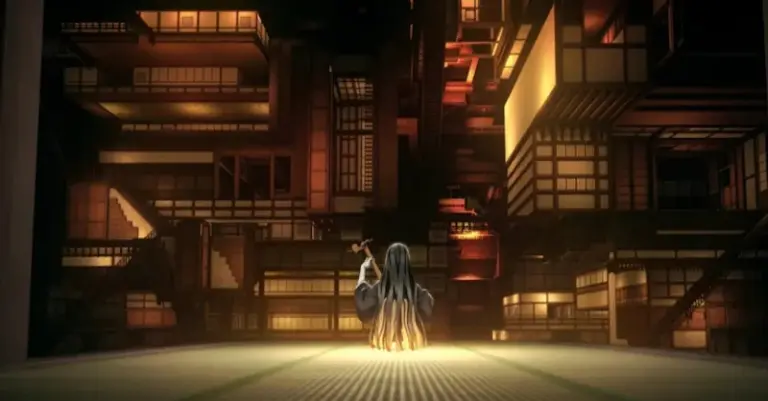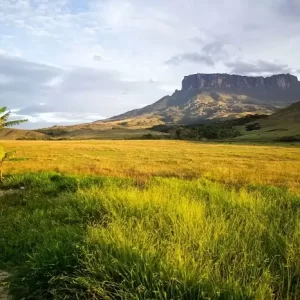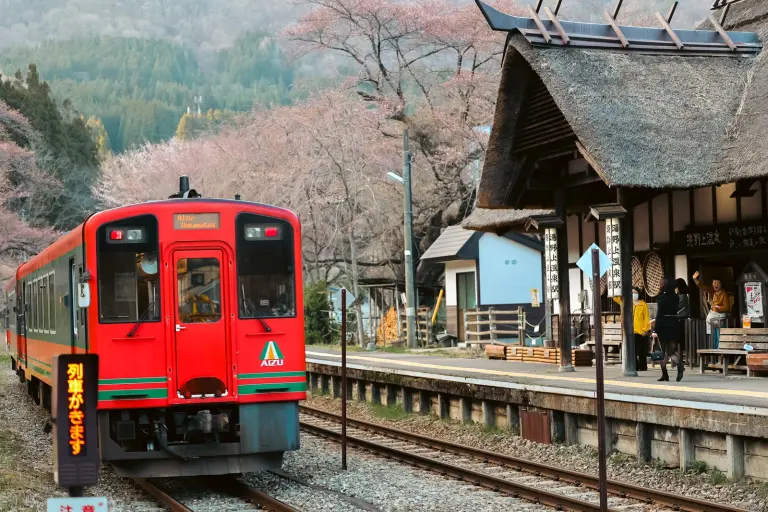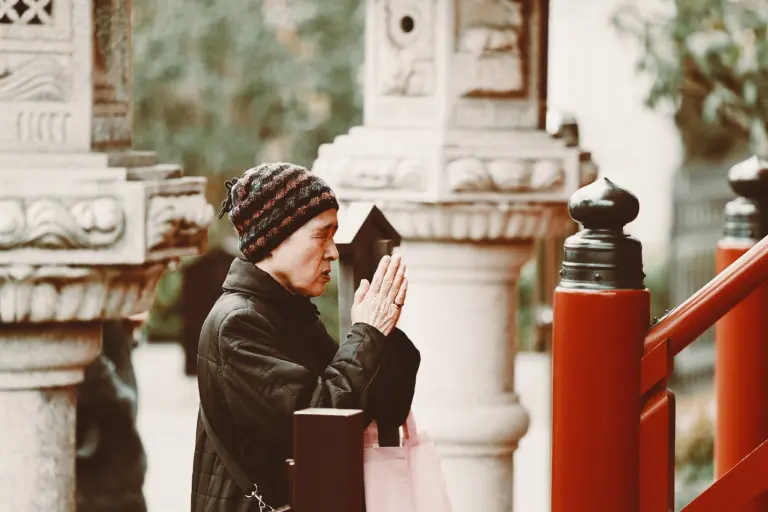Hidden amidst the harsh Sahara Desert, the Dabous Giraffes stand as one of humanity’s most remarkable ancient art treasures. These colossal sandstone carvings not only captivate archaeologists but also offer a window into a time when the Sahara was a lush, vibrant savanna teeming with life.
The Mystery of the Largest Giraffes in Rock Art
Located in the Ténéré region of Niger, about 110 kilometers north of Agadez, the Dabous Giraffes are etched into a sandstone outcrop with astonishing scale and detail:
- The larger giraffe: Standing at 5.5 meters (18 feet), it depicts a majestic male.
- The smaller giraffe: A graceful female companion, positioned beside the male.
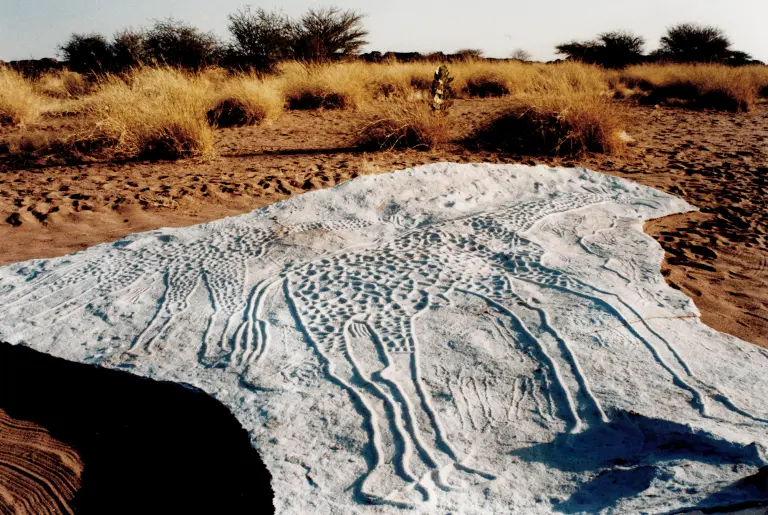
The carvings capture not only the forms of the giraffes but also intricate details like spots on their skin, horns, eyes, and even eyelashes. Notably, each giraffe features a line extending from its mouth to a human figure, symbolizing a connection or communication between humans and animals in ancient culture.
Art in the Historical Context of the Sahara
The Dabous Giraffes were created during the humid Holocene period, approximately 6,000–8,000 years ago, when the Sahara was a green and fertile savanna rather than the arid desert it is today. This era saw harmonious coexistence among humans, animals, and plants. The carvings may have been crafted by herders, reflecting their deep cultural and spiritual ties to nature.
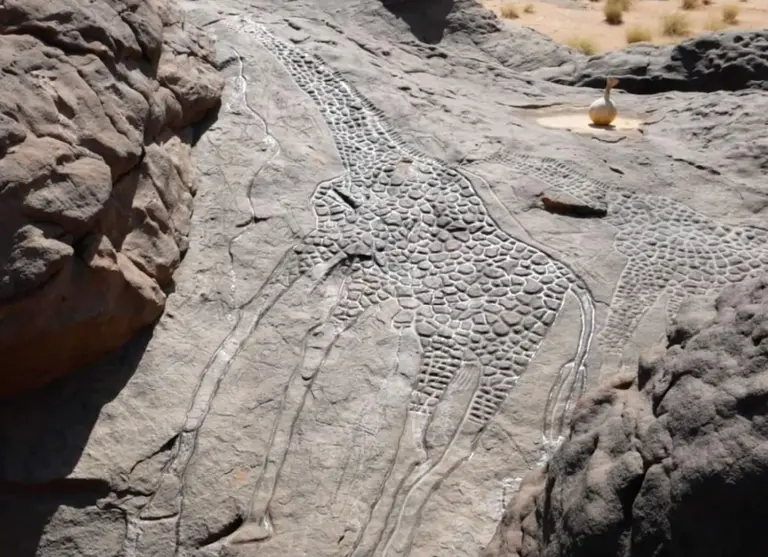
Nearby, archaeologists have uncovered an additional 828 carvings, including:
- 704 animal figures: Representing cattle, ostriches, antelopes, lions, rhinoceroses, and camels.
- 61 human figures: Depicting the daily lives of ancient inhabitants.
- 17 Tifinagh inscriptions: An ancient script of the Berber people.
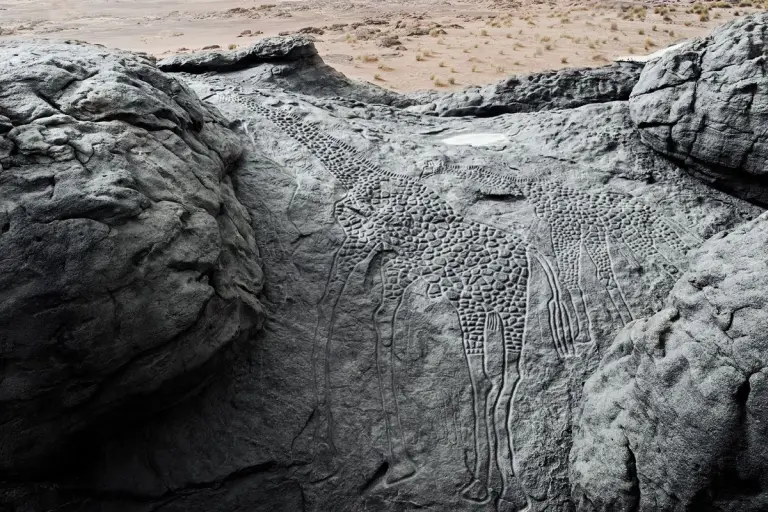
Fossilized wood remains were also found, further evidence of the region’s once-thriving ecosystem.
Discovery and Preservation of the Dabous Giraffes
- Initial discovery: French archaeologist Christian Dupuy first recorded the carvings in 1987. In 1997, photographer David Coulson brought them global attention through detailed documentation.
- Current threats: The carvings face risks from natural erosion, vandalism, and theft.
To safeguard this masterpiece, the Bradshaw Foundation spearheaded a large-scale preservation project:
- Creating replicas: Plaster casts of the carvings were made to preserve their original form. Aluminum replicas are now displayed in museums and at Agadez Airport.
- Supporting local communities: A well was dug for the local Tuareg community, reducing the likelihood of damage caused by nearby human activity.
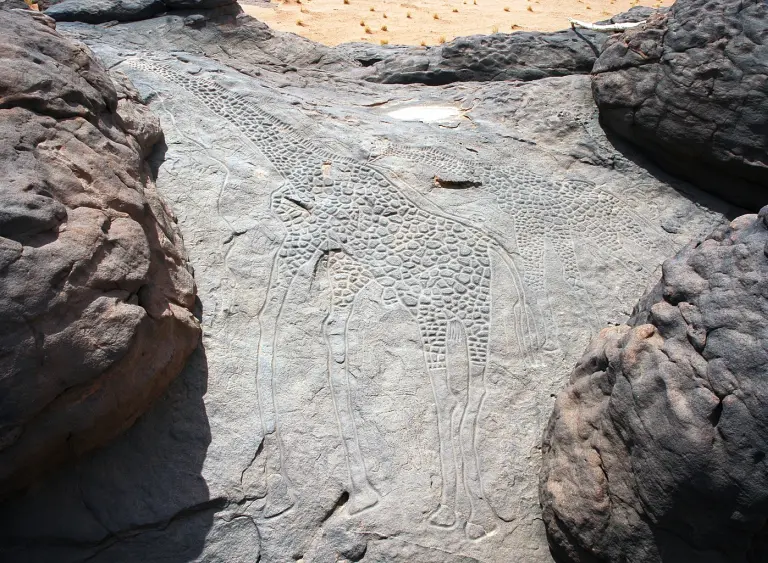
The Dabous Giraffes: A Symbol of Human-Nature Connection
The Dabous Giraffes are not just a testament to the artistic prowess of our ancestors but also a poignant reminder of humanity’s deep bond with nature. These carvings evoke a Sahara once full of life, where humans thrived and left cultural imprints that endure through millennia.
Today, the Dabous Giraffes continue to draw scientists, visitors, and art enthusiasts to witness their grandeur. However, amid growing threats, preserving this site is not just a national responsibility but a global call to protect humanity’s shared heritage.
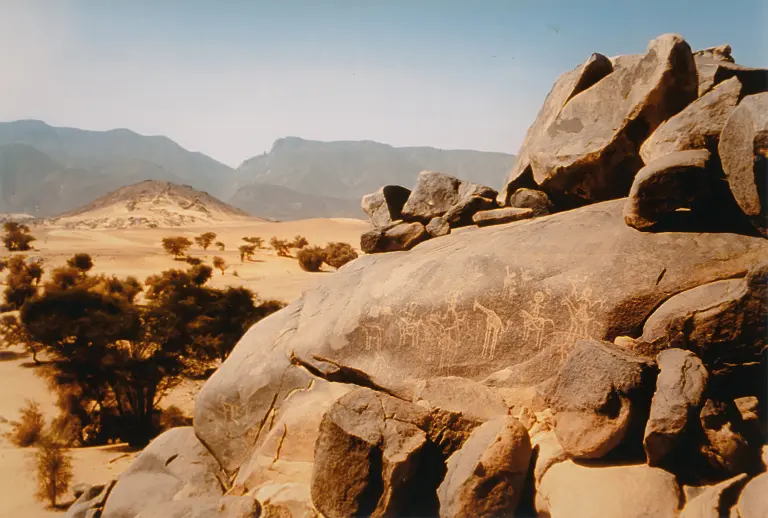
If you seek a journey of discovery, visit Niger, where marvels like the Dabous Giraffes await to tell their timeless stories.

